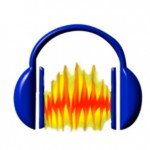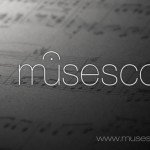Tools
This page contains links for tools that I, or my students and colleagues, have found useful in studies of music psychology. As far as possible I aim to provide links to freely available software – long live freeware and open source! I will add to the list the more I recall, and if anyone is kind enough to send useful tips for fellow readers 🙂 Please let me know if any link fails and I will update it immediately.
Stimuli for open use
RAVDESS (Ryerson Audio-Visual Database of Emotional Speech and Song)- a free multimodal database of emotional speech & song that uses North American English. Published in May 2018, this large database
 The database is gender balanced consisting of 24 professional actors, vocalizing lexically-matched statements in a neutral North American accent. Speech includes calm, happy, sad, angry, fearful, surprise, and disgust expressions, and song contains calm, happy, sad, angry, and fearful emotions. Each expression is produced at two levels of emotional intensity, with an additional neutral expression. All conditions are available in face-and-voice, face-only, and voice-only formats.
The database is gender balanced consisting of 24 professional actors, vocalizing lexically-matched statements in a neutral North American accent. Speech includes calm, happy, sad, angry, fearful, surprise, and disgust expressions, and song contains calm, happy, sad, angry, and fearful emotions. Each expression is produced at two levels of emotional intensity, with an additional neutral expression. All conditions are available in face-and-voice, face-only, and voice-only formats.
All recordings are made freely available under a Creative Commons license and can be downloaded here.
Audio editing and modelling
 Audacity – This program contains many of the basic functions of software such as Adobe Audition and will certainly allow you to carry out simple editing to sounds in typical file formats (e.g. MP3 and .wav). You can also use Audacity to manage audio recording. My advice is to make sure that you have the up to date version, which contains new features such as building gliding sounds.
Audacity – This program contains many of the basic functions of software such as Adobe Audition and will certainly allow you to carry out simple editing to sounds in typical file formats (e.g. MP3 and .wav). You can also use Audacity to manage audio recording. My advice is to make sure that you have the up to date version, which contains new features such as building gliding sounds.
PRAAT – Free software developed by the University of Amsterdam that is designed for acoustic analysis. It was designed to study speech, but its pitch analysis tools have proved particularly useful for me in the past. You can also create sounds within the software and make nice looking graphics of your sounds for articles. UCLA have kindly provided a page of very useful scripts for PRAAT that can be found here
AIM (Auditory Image Model) – (Centre for the Neural Basis of Hearing, Cambridge: UK) is a time-domain model of auditory processing intended to simulate the auditory images we hear when presented with complex sounds like music, speech, animal calls etc. The model is intended to simulate the processing performed by the auditory system to convert a sound into your first conscious awareness of that sound, that is your ‘auditory image’ of the sound. Here is information about the MATLAB version
Albert Bregman has provided a list of useful auditory demonstration CDs from his auditory scene analysis experiments.
As for recording devices, I have heard the best reviews about this device. This handy recorder is apparently easy to use and takes hours of audio recordings straight into standard file formats.
v1.3 of IDyOM (Information Dynamics of Music) – a system for constructing multiple-viewpoint, variable-order Markov models for predictive statistical modelling of musical structure. The system generates a conditional probability distribution representing the estimated likelihood of each event in a melodic sequence, given the preceding musical context; it computes Shannon entropy as a measure of uncertainty about the next event and information content as a measure of the unexpectedness of the event that actually follows. Updates in this release include better information output during viewpoint selection, ability to specify minimum number of constituent viewpoints in a link during viewpoint selection, improvements to phrase and voice handling in Kern import, and several small fixes and enhancements.The software and documentation are available at: https://code.soundsoftware.ac.uk/projects/idyom-project
Visual images
![]()
I use icons8 for all the icon-like images on my websites and infographics. It is a fantastic free resource of over 70,000 images like this sweet little music teacher!
When planning a visual display, whether on paper or on screen, it is always good practice to check that your colours are well matched and suitable to be viewed by those with conditions relating to colour blindness. Check out this useful free website from The Pennsylvania State University.
Musical assessment
I get quite a few emails asking if people can use one of our online music assessment tools for the general population (Delosis Music Listening Test). The quick answer is ‘No’, I’m afraid! The test is part of the Montreal Battery for the Evaluation of Amusia, and this tool is not suitable for anything other than detecting amusia; the vast majority of people (trained or not) will score at ceiling.
Gold MSI – The Goldsmiths Musical Sophistication Index (Müllensiefen et al. 2011) is a new test battery of musical sophistication which measures musical expertise and engagement in its different facets. At the moment the test is still being developed but we are already using it as part of a number of projects. All the materials are free for download. Müllensiefen, D., Gingras, B., Stewart, L. & Musil, J. (2011). The Goldsmiths Musical Sophistication Index (Gold-MSI): Technical Report and Documentation v0.9. London: Goldsmiths, University of London.
![ear-training_thumb[8]](http://musicpsychology.co.uk/wp-content/uploads/2012/04/ear-training_thumb8-150x150.jpg) Musical Ear Training – The Musical Ear Training test was developed by researchers at the University of Aarhus in Denmark. On each trial participants hear two melodies and must say ‘same’ or ‘different’. The test measures melody (pitch and contour) and rhythm perception. Click here for access to the original paper. The 20 minute test has large internal consistency (Cronbach alpha: 0.87; melody subtest: 0.96; rhythm subjects: 0.94) and the distributions between musicians and non musicians show almost no overlap. Both these results suggest that the test may be a valuable tool for measuring musical abilities. Anyone interested in using the test should contact Professor Peter Vuust.
Musical Ear Training – The Musical Ear Training test was developed by researchers at the University of Aarhus in Denmark. On each trial participants hear two melodies and must say ‘same’ or ‘different’. The test measures melody (pitch and contour) and rhythm perception. Click here for access to the original paper. The 20 minute test has large internal consistency (Cronbach alpha: 0.87; melody subtest: 0.96; rhythm subjects: 0.94) and the distributions between musicians and non musicians show almost no overlap. Both these results suggest that the test may be a valuable tool for measuring musical abilities. Anyone interested in using the test should contact Professor Peter Vuust.
Pitch Memory – I have developed two different pitch tests. The first tests immediate serial recall of pitch sequences that are built from 3 tones using a visual grid response (Williamson, Baddeley & Hitch, 2010). The second tests immediate list recognition of sequences of tones and uses an adaptive tracking method to give a measure of ‘memory span’ or how many tones can be held in memory (Williamson & Stewart, 2010). Both tests can be used by individuals with any degree of musical training (including none at all) and I am quite happy to provide the codes and materials for these tests on request.
Musical preferences -In 2012 a tool to create standardized music taste profiles was presented at ICMPC 12. It is called the Artist-based Music Profile (Ferrer, Eerola & Vuoskoski, 2012) and is based on research that shows when people talk about their musical taste and preferences over 80% of the dialogue is devoted to artists. Using this tool you can model and visualize musical preferences as well as explore semantic differentials in descriptions of musical characteristics. Have a play and enjoy! The Artist-based Music Preference Profiler is an application developed at the Finnish Centre of Excellence in Interdisciplinary Music Research.
Cognitive tests
Working memory – The Attention and Working Memory lab at the Georgia Institute of Technology have developed free scripts for several standard working memory tests including Operation Span and Reading Span. They work on a variety of platforms, you can find a link to the Eprime scripts here (just click on the ‘Tasks’ tab for other platforms). Anyone is free to use the tests but you will need to contact their webmaster for a password.
Various in Eprime – These are sample scripts, replicating classic, unique, or interesting studies in experimental psychology. They are intended both to demonstrate the results of the studies and to show what E-Prime can do as an experiment generation framework. They are free to download, though we ask that you credit this project if you use them in a public context. Scans of articles are only to be viewed on the browser in the context of fair use and not distributed. Thanks to Yanping Dong and her students at Guangzhou Foreign Studies University for reentering and rechecking the text of 20 of the classic studies.
Music writing and imaging
 MuseScore – is a free cross-platform WYSIWYG music notation program that offers a cost-effective alternative to commercial programs such as Sibelius, Finale and Capella.You can print engraved sheet music or save it as PDF or MIDI file. Works with Windows, Mac and Linux, and translated into 47 languages at present.
MuseScore – is a free cross-platform WYSIWYG music notation program that offers a cost-effective alternative to commercial programs such as Sibelius, Finale and Capella.You can print engraved sheet music or save it as PDF or MIDI file. Works with Windows, Mac and Linux, and translated into 47 languages at present.
Brain imaging
There are a number of useful educational apps that can be used to study brain structure and imaging. Theses include:
1) The Brain app, built by neuroscientists at the Institute of Psychiatry in London. It includes a Dissection Room and a Study Room. Great graphics! (£2.99)
2) 3D Brain, by the Cold Spring Harbor Laboratory, allows you to use your touch screen to rotate and zoom around 29 interactive structures. Discover how each brain region functions, what happens when it is injured, and how it is involved in mental illness. Each detailed structure comes with information on functions, disorders, brain damage, case studies, and links to modern research (Free)
 3) Brain Tutor 3D by Rainer Goebel, uses rendered head and brain models that were created from magnetic resonance imaging (MRI) scans. This allows to look “inside” the head using real-time slicing. The program contains information about major parcellation schemes of the cerebral cortex, including lobes, gyri, sulci and Brodmann areas. (Free)
3) Brain Tutor 3D by Rainer Goebel, uses rendered head and brain models that were created from magnetic resonance imaging (MRI) scans. This allows to look “inside” the head using real-time slicing. The program contains information about major parcellation schemes of the cerebral cortex, including lobes, gyri, sulci and Brodmann areas. (Free)

3 Comments
Thomas
Hello Victoria,
I’m a PhD lecturer and I find your Ted prezentation. I work on University of Silesia in Poland and I’m interested in music 🙂 a specialy sound and memory.
Now I’m looking for some pleases (University) for my one month internship skills.
I published popular science book under the title: “Boost your efficiency through listening to music”.
And I also have some an idea for an interesting experiment with memory (memorizing numbers) and music (binuar beats).
So if you have time to cooperate with me or if you like look to my ebook pleas read to me:
formless@poczta.fm
I send you pdf.
Best regards
PhD Thomas Kopczynski
Pingback:
Pingback: